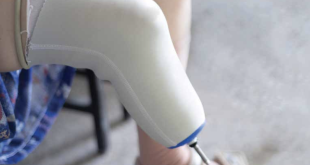Word by:

In today’s fast-paced world, where diseases can spread rapidly, maintaining good hand hygiene has never been more critical. Hand hygiene, the simple act of cleaning hands, is the most effective way to prevent the spread of infections. In the battle against infectious diseases, hand hygiene stands as the first line of defense. Simple yet profoundly effective, this practice is fundamental to infection control and prevention whether you’re a healthcare professional, a student, or simply going about your daily routine, practicing good hand hygiene can save lives in healthcare settings, public places, and everyday life. Proper hand hygiene not only safeguards individuals but also curtails the spread of contagious diseases within communities.
Hand Hygiene: Now and Then
Hand hygiene has a long and important history in promoting public health and preventing the spread of diseases. Hand hygiene is a fundamental practice in preventing the spread of infections and diseases. Throughout history, various cultures and societies have recognized the importance of hand hygiene in maintaining health and well-being. Here’s a brief overview of the history of hand hygiene:
Ancient Civilizations: Ancient civilizations, such as the Babylonians, Egyptians, and Greeks, practiced hand washing and bathing for personal hygiene. They used water, sand, and various natural substances like ash and herbs for cleaning.
Islamic Golden Age: During the Islamic Golden Age (8th to 14th centuries), scholars like Al Razi wrote and emphasized about the importance of hand washing with soap to prevent the spread of diseases. They pioneered early forms of soap using plant-based ingredients. Middle Ages: In Europe, public baths were popular during the Roman Empire but declined in the middle Ages due to various social, religious, and economic factors. As a result, personal hygiene, including hand washing, became less common.
19th Century: In the mid-19th century, Ignaz Semmelweis, a Hungarian physician, made significant contributions to the importance of hand hygiene in healthcare settings. He observed a significant reduction in maternal mortality when doctors and medical students washed their hands with chlorine solution before delivering babies. His observations laid the foundation for modern hand hygiene practices in healthcare settings.
20th Century: With the discovery of germs and the germ theory of disease, the importance of hand hygiene became widely recognized. The use of antiseptics and hand disinfectants became common in medical settings.
Florence Nightingale: During the Crimean War in the 1850s, Florence Nightingale emphasized the significance of hand washing in nursing practice, which greatly reduced the spread of infections in military hospitals. In the early 20th century, guidelines and protocols for hand washing started to appear in medical literature and healthcare facilities
Late 20th Century to Present: The discovery of antiseptics and antibiotics further emphasized the importance of hand hygiene in preventing infections.
Organizations like the World Health Organization (WHO) and the Centers for Disease Control and Prevention (CDC) have developed guidelines and campaigns to promote hand hygiene worldwide. They introduced guidelines and campaigns like the “Clean Care is Safer Care” initiative, emphasizing the importance of hand hygiene in healthcare settings.
Hand Sanitizers: With advancements in chemistry and technology, alcohol-based hand sanitizers became widely available in the late 20th century, providing a convenient and effective way to disinfect hands when soap and water are not readily available.
Recent Developments: The importance of hand hygiene gained further prominence during the events like the H1N1 pandemic in 2009 and the COVID-19 pandemic in 2019-2020 on a global scale. Public health campaigns during these times have reinforced the message of frequent hand washing and the use of hand sanitizers to prevent the spread of infectious diseases. Today, hand hygiene is a standard practice in healthcare settings, food handling, and various other industries. It is also promoted in public health campaigns globally to prevent the spread of infectious diseases and maintain overall health and well-being.
Understanding the Significance of Hand Hygiene
Infections spread through various means, including direct contact with an infected person, touching contaminated surfaces, and through respiratory droplets. Our hands act as carriers for a multitude of germs. Without regular and thorough hand washing, these pathogens can easily transfer to the mucous membranes of the face, leading to infections.
Hand hygiene is not merely a routine; it is a crucial practice that saves lives. The hands, being the primary tools for interacting with the environment, inadvertently become carriers of various pathogens. Proper hand hygiene disrupts the transmission chain, significantly reducing the risk of spread of infectious agents like bacteria, viruses, and fungi. This practice is not limited to healthcare settings but applies to everyone, everywhere.
WHO-recommended hand rub formulation preparation at GIH
Step by Step Preparation
∙ Gather all the required equipments.
∙ Perform hand hygiene.
∙ Apply personal protective equipments.
∙ The Isopropyl alcohol (99.8%) 7515ml / Ethanol (96%) 8333 ml) is poured into the large bottle or tank up to the graduated mark.
∙ Hydrogen peroxide (3%) 417 ml is added using the measuring cylinder. ∙ Glycerol (98%) 145 ml is added using a measuring cylinder.
∙ The bottle/tank is then topped up to the 10-litre mark with sterile distilled or cold boiled water.
∙ The lid or the screw cap is placed on the tank/bottle as soon as possible after preparation, in order to prevent evaporation.
∙ The solution is mixed by shaking gently.
∙ Assure the quality.
∙ Immediately divide up the solution into its final containers (e.g. 500 or 100 ml plastic bottles)
∙ Place the bottles in quarantine for 72 hours before use.


Quality Control
Alcoholmeter:
∙ To control the alcohol concentration of the final use solution
∙ Target concentration: ±75%–85%.


Production and storage facilities
∙ Production and storage facilities should ideally be air conditioned or cool rooms. ∙ No naked flames or smoking should be permitted in these areas.
∙ Not be produced in quantities exceeding 50-litres locally or in central pharmacies lacking specialized air conditioning and ventilation.
∙ National safety guidelines and local legal requirements must be adhered to the storage of ingredients and the final product.
When and How to Practice Hand Hygiene
Hand rubbing with alcohol-based hand rub is the preferred routine method of hand hygiene if hands are not visibly soiled.

Hand washing with soap and water essential when hands are visibly dirty or visibly soiled.


When To Hand Wash
∙ When hands are visibly dirty or visibly soiled with blood or other body fluids ∙ After using the toilet
∙ After suspected exposure to potential spore-forming pathogens(clostridium difficile) ∙ Unavailability of an alcohol based hand rub
Compliance rate 2016- 2022(Seven Year)

NURSE
DOCTOR
PARAMEDICS HOUSEKEEPING OVERALL
Conclusion
Hand hygiene is a basic yet powerful measure for infection control and prevention. Its impact on infection control and prevention cannot be overstated. In healthcare settings, the adherence to strict hand hygiene protocols can significantly reduce the incidence of healthcare-associated infections, improving patient outcomes and saving lives. As individuals and communities, our commitment to regular and thorough hand washing can make a significant difference in preventing infections and promoting overall well-being. So, let’s make hand hygiene a habit and pave the way for a healthier future. It is a collective responsibility to uphold this fundamental practice, ensuring a healthier and safer future for all.
 Medicosnext
Medicosnext




